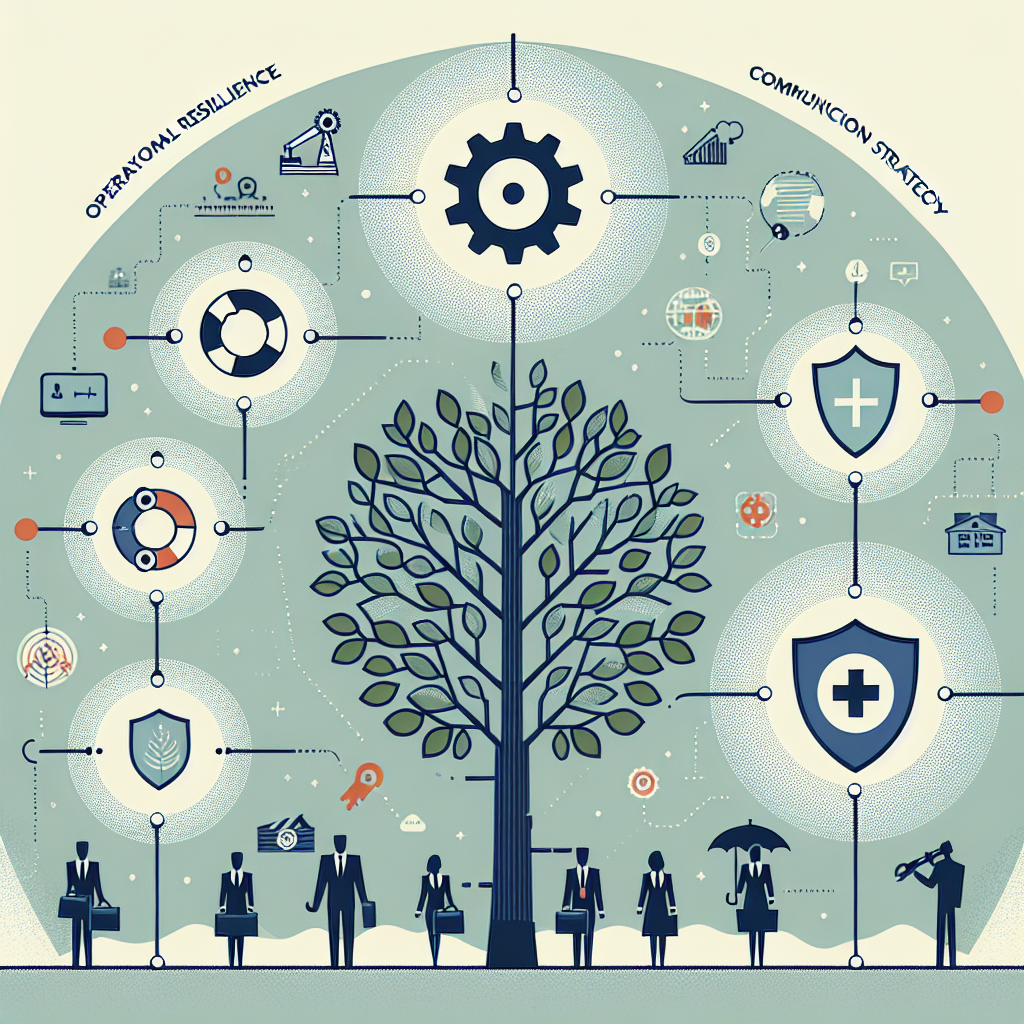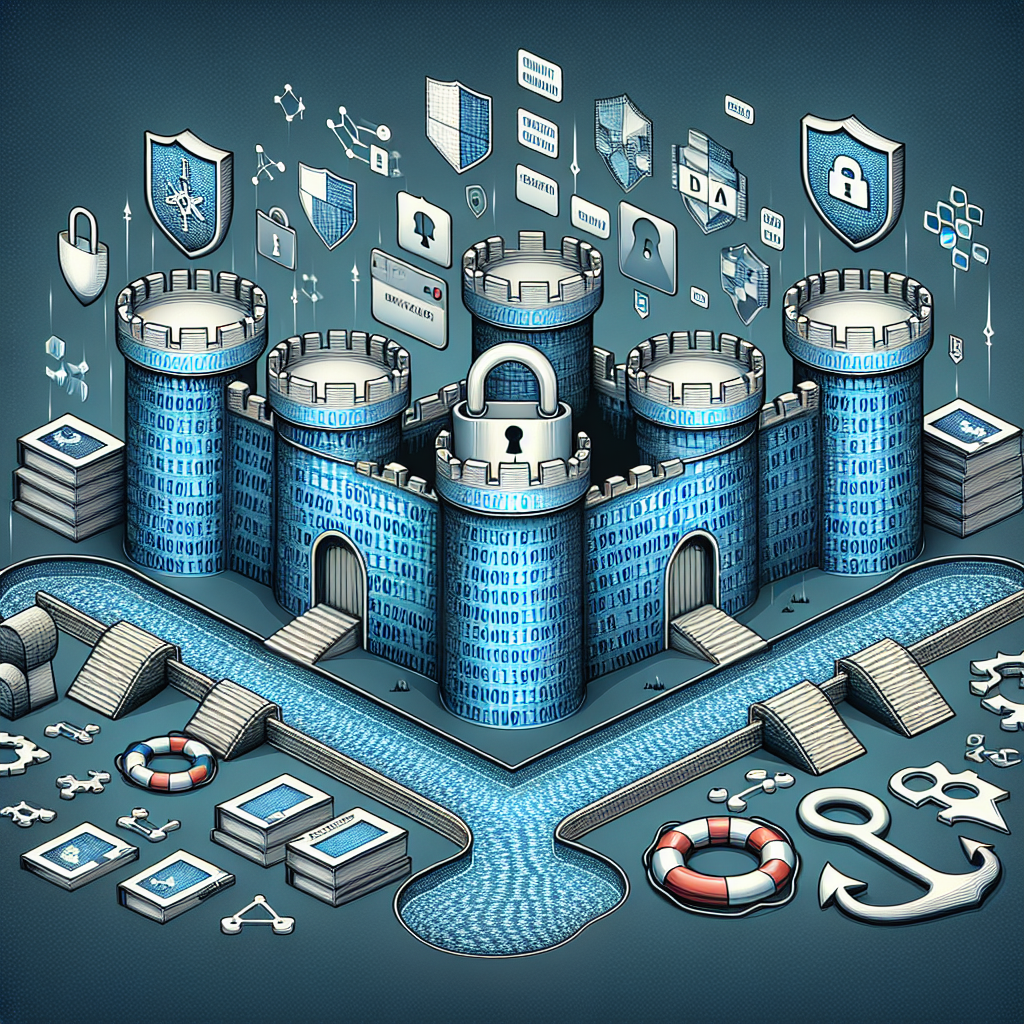Your cart is currently empty!
Tag: IT Infrastructure Management

Maximizing Equipment Uptime with Proactive Maintenance Strategies
Ensuring maximum equipment uptime is a top priority for businesses in every industry. Downtime can be costly, leading to lost productivity, missed deadlines, and ultimately, decreased profits. One way to minimize downtime and maximize equipment uptime is through proactive maintenance strategies.Proactive maintenance involves regularly scheduled maintenance tasks that are performed before a piece of equipment fails. By being proactive, businesses can identify and address potential issues before they escalate into more serious problems. This not only prevents unexpected downtime but also extends the lifespan of the equipment.
There are several proactive maintenance strategies that businesses can implement to maximize equipment uptime. One of the most common strategies is preventive maintenance, which involves regularly scheduled inspections, cleaning, and servicing of equipment. This can help identify and address wear and tear, lubrication issues, and other potential problems before they lead to downtime.
Another proactive maintenance strategy is predictive maintenance, which uses data and analytics to predict when equipment is likely to fail. By monitoring key indicators such as temperature, vibration, and noise levels, businesses can identify patterns that indicate a potential issue. This allows them to address the problem before it causes downtime.
Condition-based maintenance is another proactive strategy that involves monitoring the condition of equipment in real-time. Sensors and monitoring devices are used to track key performance indicators, allowing businesses to detect issues as they arise and take corrective action before a failure occurs.
Implementing a proactive maintenance strategy requires a commitment from businesses to invest time and resources into regular maintenance activities. This may include training staff, investing in monitoring equipment, and establishing a maintenance schedule. While proactive maintenance may require an upfront investment, the long-term benefits of increased uptime and reduced maintenance costs far outweigh the initial costs.
In conclusion, maximizing equipment uptime is essential for businesses to maintain productivity and profitability. Proactive maintenance strategies such as preventive maintenance, predictive maintenance, and condition-based maintenance can help businesses identify and address potential issues before they lead to downtime. By investing in proactive maintenance, businesses can extend the lifespan of their equipment and minimize costly disruptions to operations.

5 Key Elements of a Strong Service Level Agreement (SLA)
A Service Level Agreement (SLA) is a crucial document that outlines the expectations and responsibilities of both parties involved in a service agreement. It serves as a roadmap for the relationship between a service provider and a client, ensuring that both parties are on the same page and have a clear understanding of what is expected from each other. A strong SLA is essential for maintaining a successful and mutually beneficial relationship, and there are five key elements that should be included to make it effective.1. Clear and Specific Objectives: The first element of a strong SLA is clearly defined objectives. Both parties should have a clear understanding of what is expected from the service provider and what the client needs to achieve their goals. This includes specific metrics, targets, and deadlines that need to be met to ensure the success of the service agreement.
2. Measurable Metrics: In order to track the performance of the service provider and ensure that the agreed-upon objectives are being met, it is important to include measurable metrics in the SLA. This could include things like response times, resolution times, uptime percentages, and other key performance indicators that are relevant to the service being provided.
3. Roles and Responsibilities: Another key element of a strong SLA is clearly defining the roles and responsibilities of both parties. This includes outlining who is responsible for what tasks, how communication will be handled, and what the escalation process is in case of any issues or disputes. Having a clear understanding of each party’s responsibilities helps to avoid confusion and ensures that everyone is on the same page.
4. Penalties and Incentives: A strong SLA should also include penalties and incentives to encourage compliance and ensure accountability. Penalties could include financial repercussions for failing to meet agreed-upon metrics, while incentives could include bonuses or rewards for exceeding expectations. By including these provisions in the SLA, both parties are incentivized to perform at their best and meet their obligations.
5. Flexibility and Review Process: Finally, a strong SLA should include provisions for flexibility and a review process. Business needs and circumstances can change over time, so it is important to build in mechanisms for adjusting the SLA as needed. This could include regular checkpoints to review performance, renegotiating terms if necessary, and setting up a process for resolving disputes or conflicts that may arise.
In conclusion, a strong SLA is essential for maintaining a successful and productive relationship between a service provider and a client. By including clear objectives, measurable metrics, defined roles and responsibilities, penalties and incentives, and provisions for flexibility and review, both parties can ensure that their needs are met and that the service agreement is a success. By paying close attention to these key elements, businesses can set themselves up for a successful and mutually beneficial partnership.

Best Practices for Effective IT Infrastructure Management
Effective IT infrastructure management is crucial for organizations to ensure smooth operations, high performance, and secure data management. IT infrastructure refers to the hardware, software, networks, and other components that support an organization’s IT systems. To ensure the efficiency and effectiveness of IT infrastructure management, organizations need to follow best practices. Here are some key best practices for effective IT infrastructure management:1. Regular Monitoring and Maintenance: Regular monitoring of IT infrastructure components is essential to identify any potential issues or bottlenecks. By proactively monitoring the health and performance of hardware, software, and networks, organizations can address issues before they escalate into major problems. Regular maintenance, such as software updates, patches, and hardware upgrades, is also crucial to ensure the smooth functioning of IT systems.
2. Disaster Recovery Planning: Organizations should have a robust disaster recovery plan in place to ensure business continuity in the event of a disaster or system failure. This includes regular data backups, offsite storage, and a documented recovery process. Testing the disaster recovery plan regularly is also important to ensure that it works effectively when needed.
3. Security Management: Protecting sensitive data and IT systems from cyber threats is a top priority for organizations. Implementing security measures such as firewalls, antivirus software, encryption, and access controls is essential to safeguard IT infrastructure. Regular security audits and vulnerability assessments can help identify and address any security weaknesses.
4. Scalability and Flexibility: IT infrastructure should be designed with scalability and flexibility in mind to accommodate the changing needs of the organization. This includes using cloud services, virtualization, and scalable hardware solutions to easily expand or scale down IT resources as needed. IT infrastructure should also be flexible enough to support new technologies and applications.
5. Documentation and Configuration Management: Maintaining detailed documentation of IT infrastructure components, configurations, and processes is essential for effective management. This includes documenting hardware and software inventory, network diagrams, and configuration settings. Configuration management tools can help ensure consistency and accuracy in IT infrastructure configurations.
6. Performance Monitoring and Optimization: Monitoring the performance of IT infrastructure components is important to identify and resolve performance issues. By analyzing performance metrics, organizations can optimize IT infrastructure to improve efficiency and performance. This includes tuning hardware and software settings, optimizing network configurations, and implementing performance monitoring tools.
7. Compliance and Regulations: Organizations should ensure that their IT infrastructure management practices comply with industry regulations and standards. This includes data privacy regulations, security standards, and industry-specific requirements. Regular audits and compliance checks can help ensure that IT infrastructure management practices meet regulatory requirements.
In conclusion, effective IT infrastructure management is essential for organizations to ensure the reliability, security, and performance of their IT systems. By following best practices such as regular monitoring and maintenance, disaster recovery planning, security management, scalability, documentation, performance optimization, and compliance, organizations can effectively manage their IT infrastructure and support their business operations.

5 Essential Steps to Developing a Strong Business Continuity Strategy
In today’s fast-paced and unpredictable business environment, having a strong business continuity strategy is essential for the success and sustainability of any organization. A well-thought-out plan can help businesses navigate through unexpected disruptions, such as natural disasters, cyber attacks, or pandemics, and ensure that they can continue operating and serving their customers effectively.Here are five essential steps to developing a strong business continuity strategy:
1. Conduct a thorough risk assessment: The first step in developing a business continuity strategy is to conduct a comprehensive risk assessment. This involves identifying potential threats and vulnerabilities that could impact your business operations, such as power outages, data breaches, or supply chain disruptions. By understanding the risks that your organization faces, you can develop a plan that addresses these specific challenges.
2. Define critical business functions: Once you have identified the risks that your organization faces, the next step is to define the critical business functions that are essential for the continued operation of your business. This could include key processes, systems, and resources that are necessary for delivering products or services to customers. By prioritizing these functions, you can focus your efforts on ensuring that they are protected and can be quickly restored in the event of a disruption.
3. Develop a business continuity plan: With a clear understanding of your organization’s risks and critical functions, it is important to develop a detailed business continuity plan that outlines how your business will respond to and recover from disruptions. This plan should include strategies for mitigating risks, as well as procedures for responding to emergencies, communicating with stakeholders, and restoring operations in a timely manner.
4. Test and update the plan regularly: A business continuity plan is only effective if it is regularly tested and updated to reflect changes in your organization’s operations or external environment. Regularly conducting drills and exercises can help identify any gaps or weaknesses in your plan and ensure that your team is prepared to respond effectively to a real-life crisis. Additionally, it is important to review and update the plan annually to ensure that it remains relevant and aligned with your organization’s goals and objectives.
5. Train employees and stakeholders: Finally, it is essential to train employees and stakeholders on the business continuity plan and their roles and responsibilities in the event of a disruption. By providing training and awareness programs, you can ensure that everyone in your organization understands how to respond to emergencies and contribute to the successful implementation of the plan. Additionally, it is important to communicate regularly with key stakeholders, such as customers, suppliers, and partners, to ensure that they are aware of your business continuity strategy and can support your efforts in times of crisis.
In conclusion, developing a strong business continuity strategy is essential for protecting your organization from unexpected disruptions and ensuring that you can continue operating and serving your customers effectively. By following these five essential steps, you can create a plan that is tailored to your organization’s specific needs and helps you navigate through challenges with resilience and confidence.

Disaster Recovery Strategies: How to Ensure Business Continuity
In today’s fast-paced and ever-changing business environment, disaster recovery planning is essential to ensure business continuity. Disasters can strike at any time, whether they be natural disasters like hurricanes or earthquakes, or man-made disasters like cyber attacks or power outages. Without a solid disaster recovery strategy in place, businesses risk losing valuable data, revenue, and even their reputation.To ensure business continuity in the face of disaster, businesses must have a comprehensive disaster recovery plan in place. This plan should outline how the organization will respond to and recover from various types of disasters, and should be regularly tested and updated to ensure its effectiveness.
One key aspect of a disaster recovery strategy is data backup and recovery. Businesses should regularly back up their data to secure, off-site locations to ensure that critical information can be recovered in the event of a disaster. Cloud-based backup solutions are often recommended, as they provide secure, scalable storage options that can be accessed from anywhere.
Another important component of disaster recovery planning is identifying and prioritizing critical business functions. By assessing which functions are essential to the organization’s operations, businesses can develop strategies to ensure that these functions can be quickly restored in the event of a disaster. This may involve setting up redundant systems, training staff on emergency procedures, or establishing communication channels with key stakeholders.
Communication is also key to a successful disaster recovery strategy. Businesses should have clear communication plans in place to keep employees, customers, and suppliers informed about the organization’s response to a disaster. This may involve setting up emergency communication systems, such as mass notification tools or social media channels, to quickly disseminate information in a crisis.
Regular testing and training are crucial to ensuring that a disaster recovery plan is effective. Businesses should conduct regular drills and simulations to test their response to various disaster scenarios, and should update their plan based on lessons learned from these exercises. Staff should also be trained on emergency procedures and should be familiar with their roles and responsibilities in the event of a disaster.
In conclusion, disaster recovery planning is essential to ensure business continuity in the face of unforeseen disasters. By developing a comprehensive disaster recovery strategy that includes data backup and recovery, identifying critical business functions, establishing communication plans, and conducting regular testing and training, businesses can minimize the impact of disasters and protect their operations, revenue, and reputation. It is never too late to start planning for disaster recovery, so businesses should take action now to protect themselves and ensure their long-term success.

Ensuring Data Security: A Guide to Effective Backup and Recovery Strategies
In today’s digital age, data security is more important than ever. With the increasing threat of cyber attacks and data breaches, it is crucial for businesses to have effective backup and recovery strategies in place to protect their sensitive information.Ensuring data security involves not only preventing unauthorized access to data, but also ensuring that data is backed up and recoverable in the event of a disaster or system failure. Without proper backup and recovery strategies, businesses risk losing valuable information and facing costly downtime.
One of the most important steps in ensuring data security is to regularly back up data. This means making copies of important files and storing them in a secure location, such as an offsite data center or cloud storage service. By regularly backing up data, businesses can ensure that they have a copy of their information in case of a disaster or cyber attack.
In addition to regular backups, businesses should also consider implementing a disaster recovery plan. This plan outlines the steps that need to be taken in the event of a data breach or system failure, including how to restore data and get systems back up and running as quickly as possible. By having a disaster recovery plan in place, businesses can minimize the impact of a data breach or system failure and ensure that they can recover quickly.
Another important aspect of data security is encryption. Encryption involves encoding data so that it is unreadable to unauthorized users. By encrypting sensitive information, businesses can protect their data from cyber attacks and ensure that it remains secure even if it is stolen.
Furthermore, businesses should also consider implementing access controls to restrict who has access to sensitive data. By limiting access to sensitive information to only authorized users, businesses can reduce the risk of data breaches and ensure that their information remains secure.
Overall, ensuring data security requires a combination of preventative measures, such as encryption and access controls, as well as effective backup and recovery strategies. By implementing these strategies, businesses can protect their sensitive information and minimize the risk of data breaches and system failures. Ultimately, investing in data security is crucial for the long-term success and security of any business.

Remote Monitoring: A Game-Changer for Businesses in the Digital Age
In today’s fast-paced and technology-driven world, businesses are constantly looking for ways to streamline their operations and improve efficiency. One tool that has revolutionized the way businesses operate is remote monitoring.Remote monitoring allows businesses to keep a close eye on their operations and assets, even when they are not physically present. This technology uses sensors, cameras, and other devices to collect data and transmit it to a centralized system, where it can be analyzed and acted upon in real-time.
One of the biggest advantages of remote monitoring is that it allows businesses to proactively address issues before they escalate into major problems. For example, a manufacturing plant can use remote monitoring to track the performance of its machinery and detect any abnormalities that could indicate a potential breakdown. By addressing these issues early on, businesses can minimize downtime and costly repairs.
Remote monitoring is also a game-changer for businesses with multiple locations or a large fleet of vehicles. With remote monitoring, businesses can track the location and performance of their assets in real-time, allowing them to optimize routes, improve efficiency, and ensure the safety of their employees.
Another key benefit of remote monitoring is its ability to provide businesses with valuable insights and data that can be used to make informed decisions. By analyzing the data collected through remote monitoring, businesses can identify trends, patterns, and areas for improvement, allowing them to optimize their operations and drive growth.
In addition to improving operational efficiency, remote monitoring can also enhance the security of businesses. By installing cameras and sensors in key areas, businesses can monitor for unauthorized access, theft, and other security threats, helping to protect their assets and employees.
Overall, remote monitoring is a game-changer for businesses in the digital age. By providing real-time insights, improving operational efficiency, enhancing security, and enabling data-driven decision-making, remote monitoring is helping businesses stay ahead of the competition and drive success in today’s fast-paced and technology-driven world.

The Importance of Technical Support in Today’s Digital World
In today’s digital world, technology plays a crucial role in our everyday lives. From smartphones to laptops to smart home devices, we rely on technology to stay connected, be productive, and access information. However, with the increasing complexity of technology, problems and issues can arise that require technical support.Technical support is essential in today’s digital world for several reasons. First and foremost, it helps individuals and businesses troubleshoot and resolve issues with their devices and software. Whether it’s a malfunctioning smartphone, a virus-infected computer, or a network connectivity problem, technical support professionals are trained to diagnose and fix these issues quickly and efficiently.
Furthermore, technical support ensures that technology is used to its full potential. Many people are not aware of all the features and capabilities of their devices and software. Technical support can provide guidance and assistance on how to maximize the use of technology to improve efficiency, productivity, and overall user experience.
In addition, technical support plays a vital role in cybersecurity. With the increasing number of cyber threats and attacks, it is crucial to have proper security measures in place to protect sensitive data and information. Technical support professionals can help individuals and businesses set up firewalls, antivirus software, and other security measures to safeguard against cyber threats.
Moreover, technical support provides peace of mind for users. Knowing that there is a reliable and knowledgeable team of experts available to assist with any technical issue can alleviate stress and frustration when problems arise. This can ultimately lead to increased productivity and efficiency in both personal and professional settings.
Overall, the importance of technical support in today’s digital world cannot be overstated. As technology continues to advance and evolve, the need for reliable and efficient technical support services will only continue to grow. By investing in technical support, individuals and businesses can ensure that they are able to fully leverage the benefits of technology while also safeguarding against potential risks and threats.

10 Tips for Improving Help Desk Customer Service
Providing excellent customer service is crucial for any business, especially for a help desk support team. Help desk customer service plays a key role in retaining customers, resolving issues efficiently, and building a positive reputation for the company. Here are 10 tips for improving help desk customer service:1. Train your staff: Ensure that your help desk team is well-trained in customer service skills, technical knowledge, and problem-solving techniques. Regular training sessions can help employees stay up-to-date with the latest tools and technologies.
2. Use a ticketing system: Implement a ticketing system to track customer issues, prioritize them, and ensure timely resolution. This helps in managing customer queries effectively and providing a seamless experience.
3. Offer multi-channel support: Provide customers with various support channels such as phone, email, live chat, and self-service portals. This allows customers to choose the most convenient method for contacting support.
4. Set clear expectations: Communicate realistic timelines for issue resolution and keep customers informed about the progress of their requests. Setting clear expectations helps manage customer’s expectations and avoids misunderstandings.
5. Personalize interactions: Address customers by their name and personalize interactions to make them feel valued. Building a rapport with customers can enhance their overall experience and increase satisfaction.
6. Empower employees: Encourage your help desk team to make decisions and take ownership of customer issues. Empowered employees are more likely to provide proactive solutions and resolve problems efficiently.
7. Listen actively: Practice active listening skills by paying attention to customer concerns, asking clarifying questions, and empathizing with their situation. Listening attentively can help in understanding customer needs and building trust.
8. Provide timely responses: Respond to customer queries promptly, even if you don’t have an immediate solution. Acknowledge their concerns and assure them that you are working on resolving the issue.
9. Seek feedback: Encourage customers to provide feedback on their support experience and use it to identify areas for improvement. Feedback helps in understanding customer satisfaction levels and making necessary changes to enhance service quality.
10. Follow up: After resolving a customer issue, follow up with them to ensure that the problem has been resolved satisfactorily. This shows customers that you care about their experience and helps in building long-term relationships.
By implementing these 10 tips, help desk teams can improve customer service, boost customer satisfaction, and create a positive reputation for the company. Ultimately, providing exceptional help desk customer service contributes to customer loyalty and business success.

How to Optimize Your Network Management Strategy
In today’s digital age, network management has become a critical component for businesses to ensure seamless connectivity and productivity. With the increasing reliance on technology for day-to-day operations, having an effective network management strategy is essential for organizations of all sizes. By optimizing your network management strategy, you can improve performance, security, and reliability, ultimately leading to better business outcomes.Here are some key strategies to help you optimize your network management:
1. Conduct a Network Assessment: Before implementing any changes to your network management strategy, it’s important to conduct a thorough assessment of your current network infrastructure. This includes evaluating the performance of your network, identifying potential bottlenecks, and assessing security vulnerabilities. By understanding the current state of your network, you can better determine areas for improvement and develop a targeted optimization plan.
2. Implement Network Monitoring Tools: Network monitoring tools are essential for proactively identifying and addressing issues before they impact your business operations. These tools provide real-time visibility into your network performance, allowing you to monitor bandwidth utilization, track network traffic, and detect anomalies that may indicate potential problems. By investing in robust network monitoring tools, you can ensure that your network is running smoothly and efficiently.
3. Prioritize Security: In today’s cybersecurity landscape, network security is a top priority for businesses. Implementing strong security measures, such as firewalls, intrusion detection systems, and encryption protocols, can help protect your network from cyber threats and unauthorized access. Regularly updating your security policies and conducting security audits can further strengthen your network defenses and minimize the risk of data breaches.
4. Optimize Network Performance: To maximize the performance of your network, it’s important to optimize network configurations and settings. This includes fine-tuning network devices, such as routers and switches, to ensure optimal performance and minimize latency. Additionally, implementing Quality of Service (QoS) policies can help prioritize network traffic and ensure that critical applications receive the necessary bandwidth for smooth operation.
5. Embrace Automation: Automation can streamline network management processes and reduce the burden on IT teams. By automating routine tasks, such as configuration management, device provisioning, and troubleshooting, you can increase efficiency and free up resources to focus on strategic initiatives. Leveraging automation tools and technologies can help you optimize network management and improve overall operational efficiency.
By implementing these strategies, you can optimize your network management strategy and enhance the performance, security, and reliability of your network infrastructure. With a well-optimized network management strategy in place, your organization can better adapt to evolving technology trends and drive business growth in today’s digital landscape.
